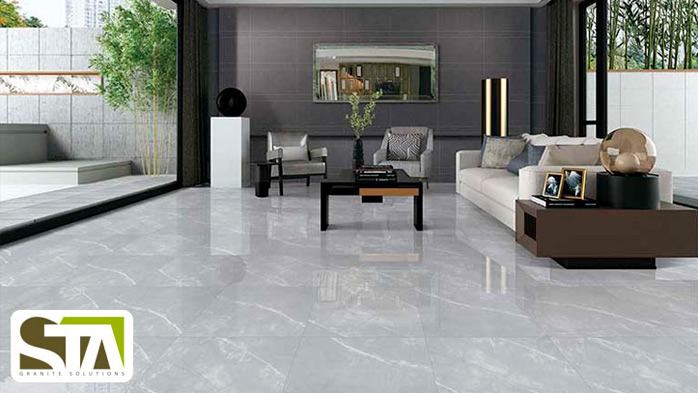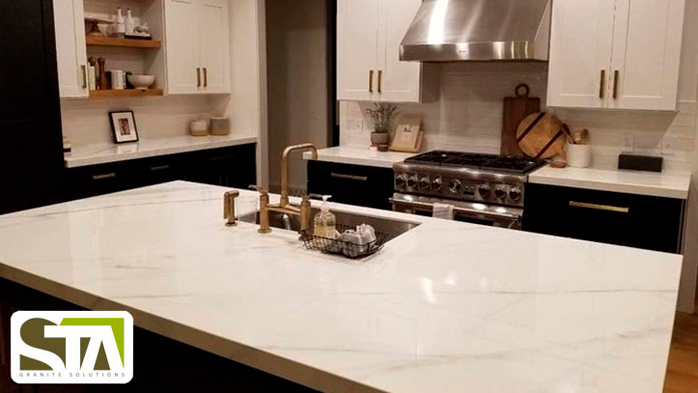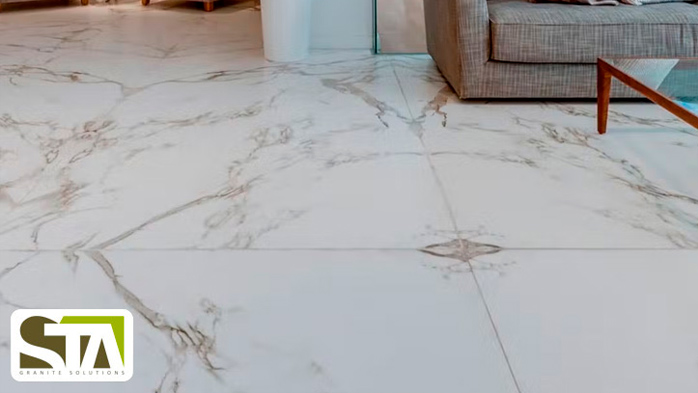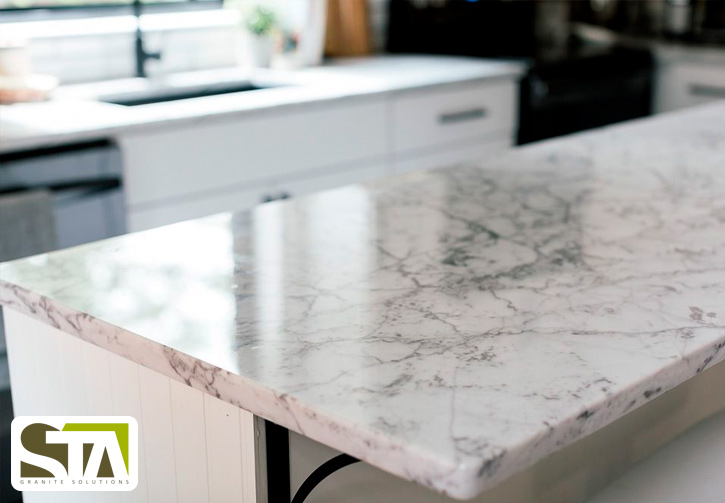CARE FOR A QUARTZ COUNTERTOP

This natural material is one of those stones that you will find on the higher end of the hardness scale. Natural quartz has a hardness of 7, making it suitable for a variety of uses. The formation of this natural stone is an interesting process.
With characteristics that make it quite different from other materials, yet desirable to homeowners, quartz is used for some very practical applications.
Taking care of it can be a fairly simple task with a little knowledge and a good routine. In this article, we consider some of the basic information about natural quartzite.
Another characteristic of quartz that derives from its quartz content is its hardness. Because there is so much quartz in quartzite, it is very hard. Quartzite is one of the hardest natural stones used in architecture, ranking 7 on the Mohs scale of mineral hardness. The hardness makes it scratch resistant and highly durable.
Caring for a quartzite countertop is fairly straightforward. The simple routine of regular cleaning using an appropriate cleaner and periodic sealer applications keeps a quartzite countertop looking good and performing well for many years. Let's elaborate on how this routine works.
Sealing Natural Quartzite
The first aspect of the routine that we will consider is the application of sealer. Quartzite sealer does not make the surface of the stone impervious to staining. Rather, it gives the stone the ability to resist absorbing liquid at a quick rate. In other words, it slows down the rate of absorption so that the owner can clean the surface before the stone "soaks up" the liquid. This means, the quicker a spill is cleaned up, the better the results.
Proper Cleaners Make a Difference
Why does it matter what cleaner you use to clean a quartzite surface? The short answer is that some cleaners will destroy the sealer. Acidic cleaners break down the sealer immediately when applied. As a result, the best cleaner to use is a quartzite cleaner that is pH neutral. Using such a cleaner will allow the sealer to do its job longer. Using a pH-neutral cleaner and responding quickly to spills will extend the period between sealer applications.
As we have seen in this article, quartzite is a very hard material that is durable, versatile, and not complicated to care for and maintain. If you have your eye on quartzite surfaces, you will be getting a great material with a lot of potentials!

The importance of having adequate equipment to cut dekton and porcelain
Why do products such as Dekton need special/different tools than those that are used for cutting granite and marble?
Material hardness is the key to understanding why you need different tools to fabricate Dekton. The material has a
The cutting process requires trimming the edges to release tensions. Then you have to follow cutting recommendations, which include using plenty of water, the proper speed, feed rate, etc. Once you follow the rules, it’s a piece of cake.


In this sense, Dekton’s edge is very easy to work with since the material is very homogeneous, and it is easy to get very good results. Any fabricator can do it well on the first attempt.
What are some common mistakes that fabricators are making when it comes to cutting this material? And, what are some common mistakes with doing edging or doing sinkholes or something?
The main mistake is trying to fabricate Dekton as if it was a granite or quartz composite. You will fail if you use the same tools, speed rates, and so on. Another common mistake is trying to cut Dekton in uneven support. It is a common source of problems too.
Sometimes people ask about what machine is best to cut Dekton. I believe the key is not the machine but the tools and proper maintenance. I have seen people with very modest equipment doing amazing things and the other way around.
7 Keys for Cutting Ultra-Compact and Sintered Dekton and Porcelain Materials







It may seem too simple or too intuitive to matter, but less than adequate water AND hoses positioned incorrectly is the most common error causing headaches among cutting these materials.
One of the more overlooked aspects of successful cutting is, to the degree that your table is not level in the horizontal plane, vibrations will occur. This unevenness can result in chipping and likely breaking the edge of your slab.
As cliche, as it may sound, choosing the right blade for the material you are processing, is critical.
While each manufacturer of ultra-compact and sintered porcelain materials may, or may not have tensioning strips built into the perimeters of each slab, if they are not removed before cutting, the slab is at higher risk of cracking or breaking.
Using the same feed rate and RPMs you may be accustomed to when cutting other materials can be a recipe for trouble. Unlike fabricating more common materials such as marble and granite, we’ve seen the most success cutting ultra-compact and sintered porcelain materials when following a systemized approach is used.
While plunge cutting tends to be of little concern for most sawyers when cutting ultra-compact and sintered porcelain materials it can pose big problems resulting in cracking or breaking your slab.
Projects requiring a sink cut-out can be an obstacle many fabricators dread. Since we already know plunging is not the ideal way to go about this, what are your options? When preparing a sink cut-out, it is advised to drill each of the four corners with a 1/2” core bit before to start initiating cutting.

PORCELAIN FOR YOUR HOME, TILES

PORCELAIN FOR YOUR HOME, COUNTERTOPS FOR YOUR KITCHEN

DEKTON FOR YOUR HOME, FLOORS, AND PAVEMENTS
- 1
- 2
- 3
- 4
- 5
- 6
- 7
- 8
- 9
- 10
- 11
- 12
- 13
- 14
- 15
- 16
- 17
- 18
- 19
- 20
- 21
- 22
- 23
- 24
- 25
- 26
- 27
- 28
- 29
- 30
- 31
- 32
- 33
- 34

